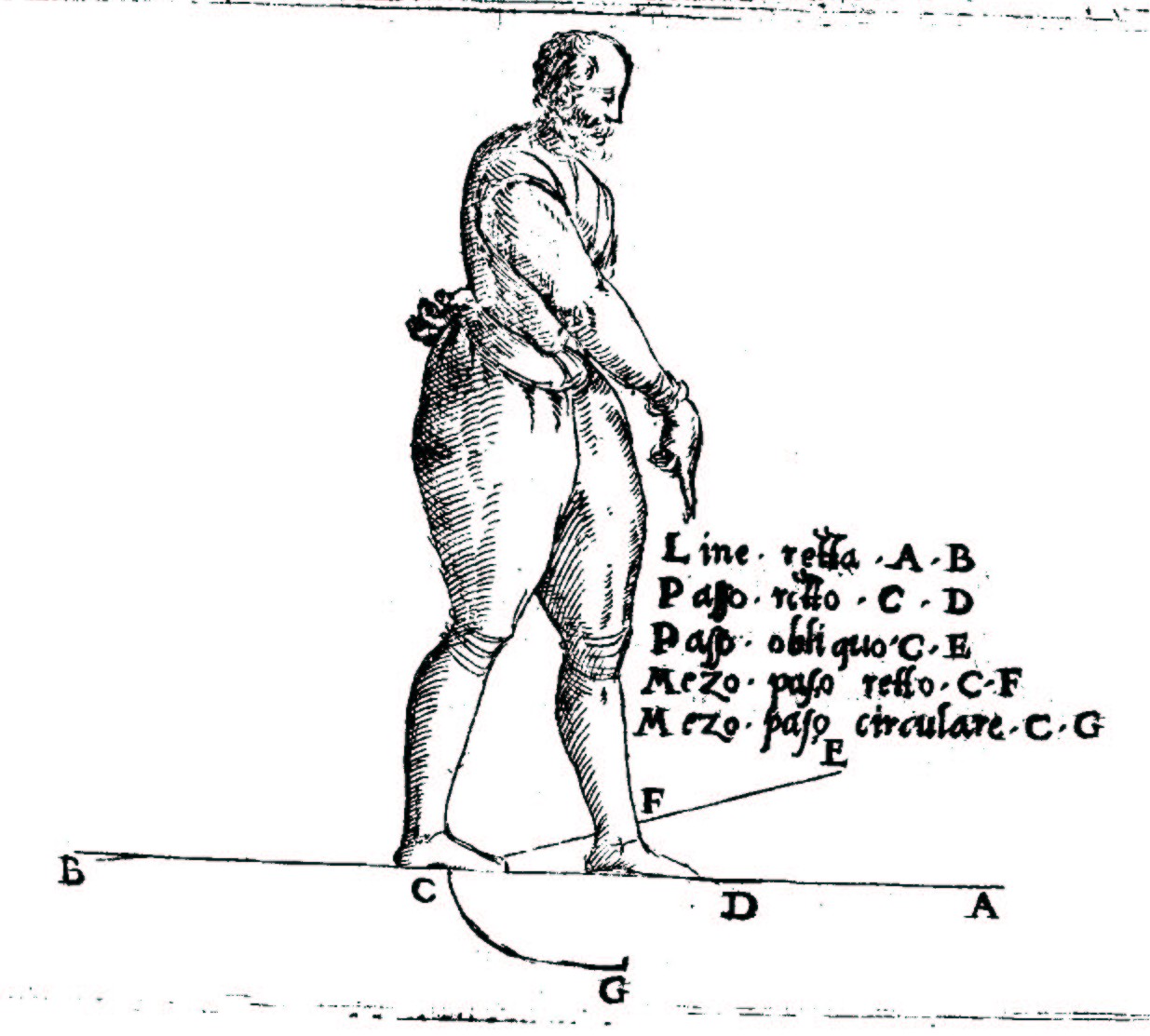
THe right legge ought alwaies to be the strength of the right hand, and likewise the lefte legge of the left hand: So that if at any time it shall happen a thrust to bee forciblie delivered, reson would that it be accompanied with the legge: for otherwise, by meanes of the force and waight, which is without the perpendiculer or hanging line of the body, having no prope to sustain it, a man is in daunger of falling. And it is to be understood, that the pace doth naturally so much increase or diminish his motion, as the hand, Therefore we see when the right foote is behinde, the hand is there also: so that who so straineth himselfe to stand otherwise, as he offereth violence unto nature, so hee canne never indure it: wherefore when he standeth at his ward, bearing his hand wide, there also the foote helpeth by his strength, being placed towards that parte: & when the hand is borne a lowe, & the right foote before, if then he would lifte his hand alofte, it is necessarie that he draw backe his foote: And there is so much distance from the place where the foot doth parte, to joyne it selfe to the other foote, as there is from the place whence the hande parteth, to that place wher it remaineth stedfast, litle more or lesse: wherefore, presupposing the said rules to be true, he must have great care to make his pace, & move his hand at one time together: And above all, not to skip or leape, but keepe one foote alwaies firme and stedfast: and when he would move it, to do it upon some great occasion, considering the foote ought chiefely to agree in motion with the hand, which hande, ought not in any case what soever happen to varie from his purpose, either in striking or defending.
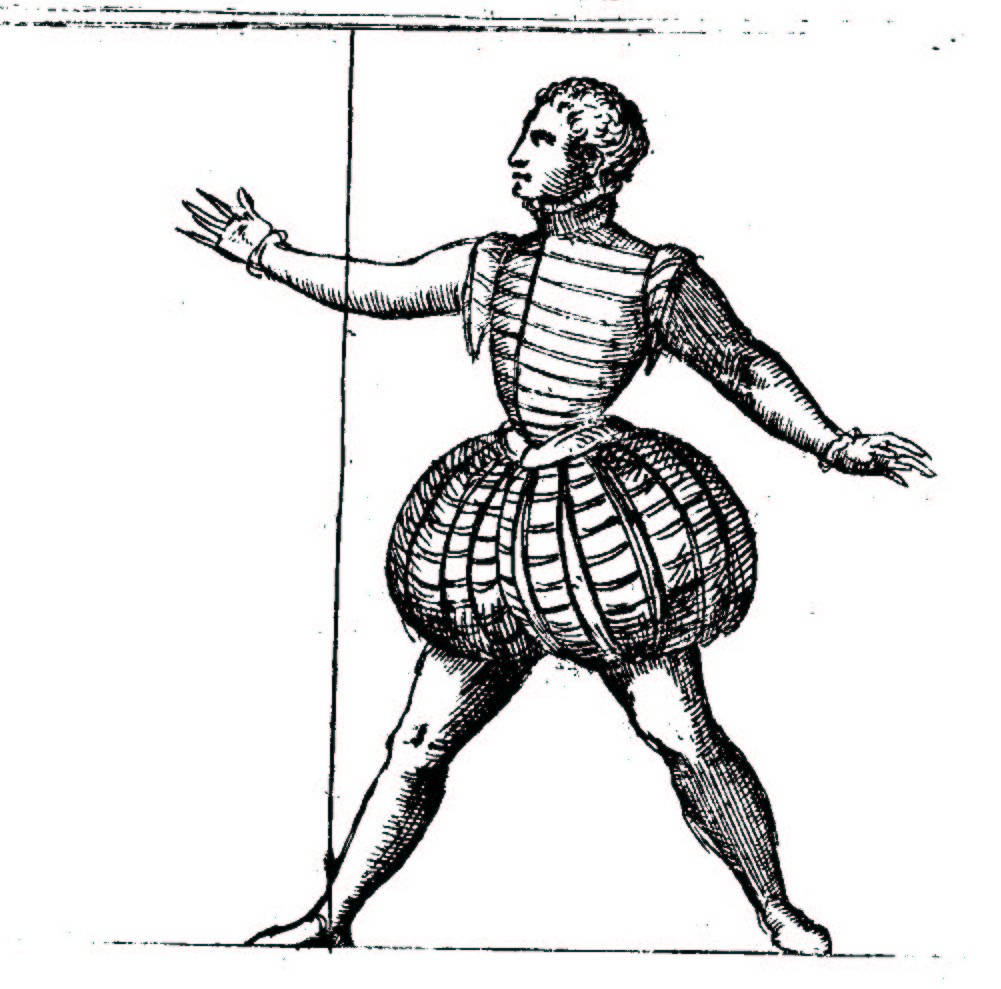
WArds in weapons are such sites, positions or placings which withstand the enemies blowes, and are as a shield or safegarde against them. For he who hath no skill to carrie his bodie and beare these weapons order lie, which either cover, or easely maie cover the whole bodie, cannot be saide to stand in warde, insomuch that a man ought to use great diligence in the apt carriyng if his bodie and weapons, For manie times he ought to settle and repose himself in his ward, therein deliberating upon some new devise, or expecting when his enemie wil minister occasion to enter upon him.
The Wards which maie be used with the single sword are threefold, Neither in my opinion maie they be anie more: for that one onlie straight line, which is the sword, maie not cover, defend and easelie offend after amie other maner.
THis high warde, which also might be called the first, beeinge the very same which every man frameth at the drawing of the sword out of the sheath, may so farre foorth, and in somuch be termed a warde, in how much, by turning the poynt of the sworde downewarde, it wardeth the whole person, and for that, by gathering in of the hinderfoote, & incresing forwardes with the right foote, a man may discharge a strong thurst above hande at his enemie.
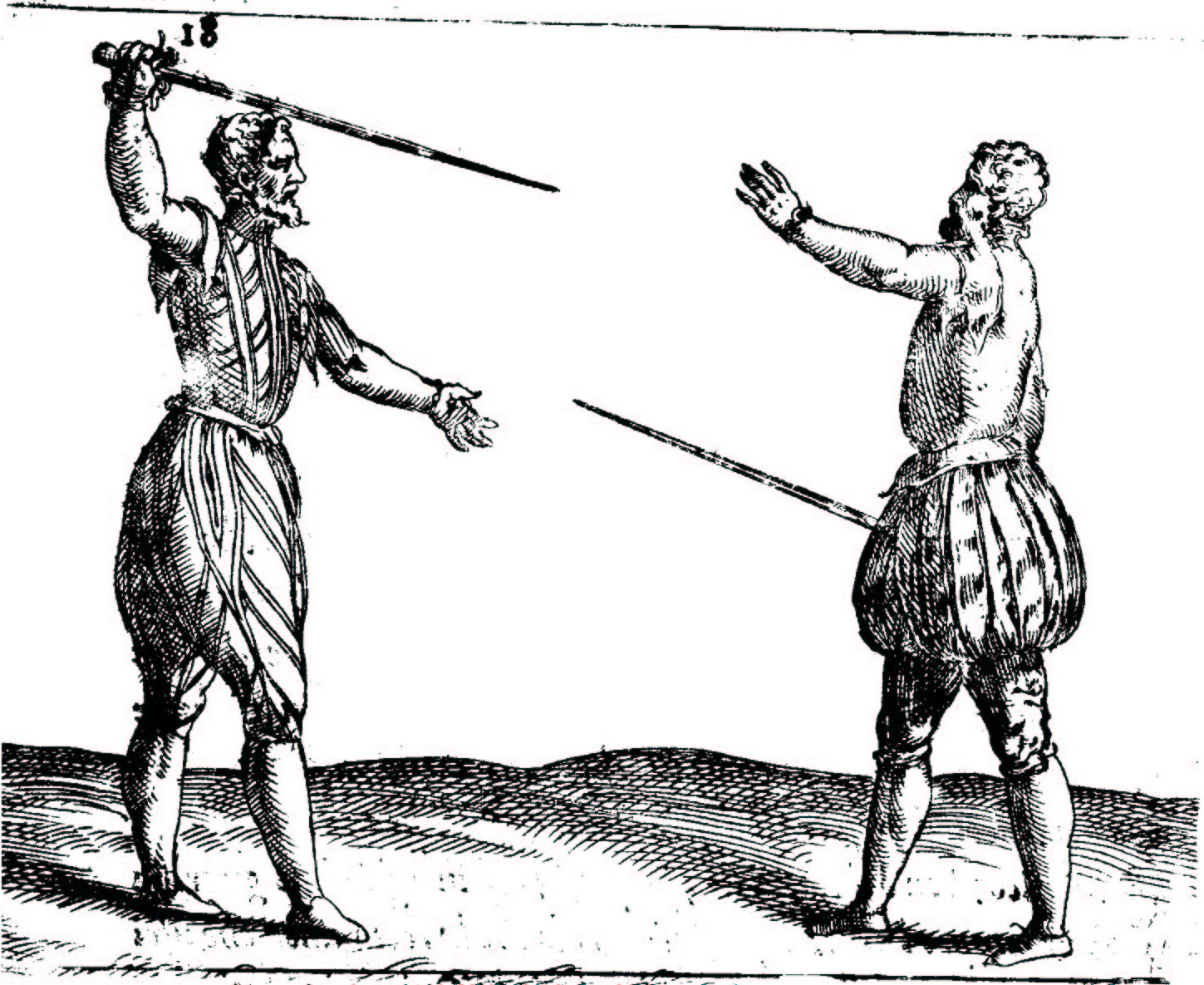
In this, and in al other wardes, it is diligently to be noted, that he beare his weapons so orderly disposed, that the streight lyne which goeth from the swords point be stil bet to strike the enemy, ether in the face or in the brest: for if the point be so borne that it respect over the enemies head, the enemie may easely first enter underneth & strike before the fall or discend thereof: And by holding the poynt two lowe, he may be beating it somewhat downwards cause it to be quit void of his bodie, and so safelie come in to strik, the which hath bine manie times sene.

THis second warde from the effecte shall be called the broad or wide warde, because the Arme widning and stretching it selfe directlie as much as is possible from the right side, beareth the sword so farre off from the bodie, that it seemeth to give great scope to the enimie to enter, albeit in truth it be nothing so. For although the hand & the handle of the sworde, be both farr from the bodie, and quite out of the streight line, yet the poynt of the sworde, from which principallie procedeth the offence, is not without the saide lyne: For it is borne so bending towarde the left side that it respecteth directlie to strike the enimie, and being borne in that sorte, it may verie well both strike and defend. And when the poynt of the sword is borne out of the streight lyne, as the hand and handle is, then a man is in daunger to bee hurte easelie by the enimie, the which happeneth not when the poynt is bending, for in such order, it is as a barre and defence to the whole bodie.
THis is also from the effect is called the base ward or lock: Neither is this name improperlie given by the Professors of this Art, for that it is more strong, sure and commodious then anie other ward, and in the which a man may more easelie strik, ward & stand therein with lesse paine. This ward is framed in the Schools after dyvers fashions, either bearing the hand low before the knee, either verie much stretched forwardes, either betweene both the knees. All which fashions, (if we regard naturall reason, and the motions used therein) are to small purpose: for, besides that they are all violent, and for a small time to be endured, they are also such, in the which a man may not strike but in two tymes, or at the least in one, and then verie weakly. Wherefore, casting all these aside, I will frame such a warde, as shalbe applyed, to time, to nature, and to safetie: And it is, when one beareth his arme directly downwardes neere his knee ( but yet without it) and his sworde with the point somewhat raysed, and bearing towards the left side, to the end, it may arme and defend that part also, in such sort, that (being borne without violence) he may continue long. And if he would strike, he may in one time, forcibly deliver a great thrust. But this he cannot do, if he beare his sword directly befor him, for then he must either draw backe his arme when he would strike, or els strike in one time, but verie weakly.
This warde therfore must be framed with the arme stretched downwards neere the knee, but yet on the outside thereof, because after this manner a man standeth safely, commodiously, and more readie, both to strike and defend.
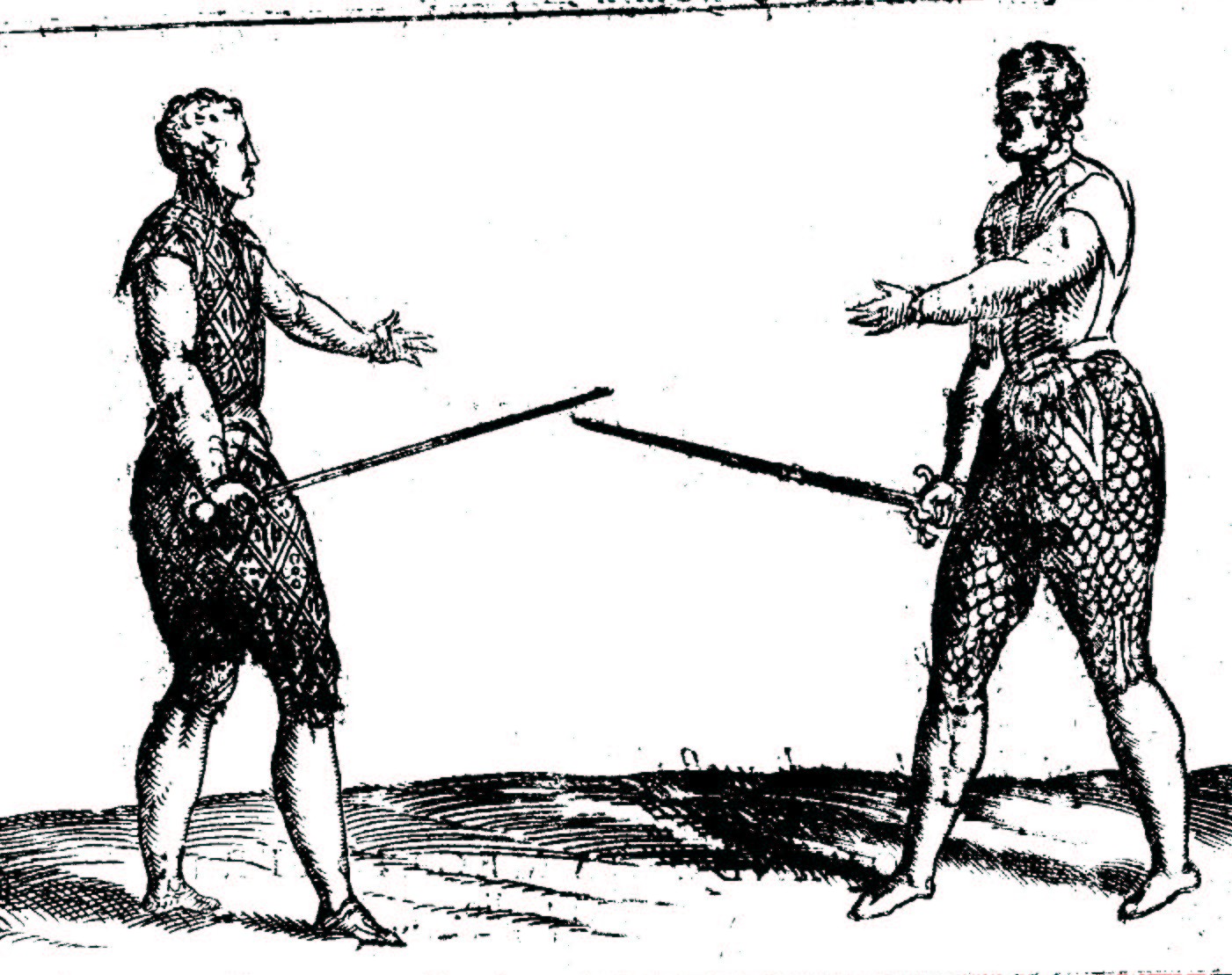
WIthout all doubt, the thrust is to be preferred before the edge blowe, aswell because it striketh in less time, as also for that in the saide time, it doth more hurt. For which consideratio, the Romanes (who were victorious in all enterprises) did accustome their souldiers of the Legions to thrust onely: Alleaging for their reason, that the blowes of the edge, though they were great, yet they are verie fewe that are deadly, and that thrustes, though litle & weake, when they enter but iii. fingers into the bodie, are wont to kill. Therefore I laye down this for a firme and certaine rule, that the thrust doth many times more readily strike, and give the greater blowe against the enimie. And to the end, a man may thrust it out with the greatest force at the most advantage, and uttermost length that may be, he must alwaies remember to carrie his left foote compassing behind him in such sort, that the hinderfoot so compassing may alwaies be in the straight lyne of the hand and sworde, as a Diameter in the middest of a Circle. And in finishing of the blowe, to drawe his hinder-foote a halfe pace forwardes, and so by that meanes the blow is longer & stronger, and the shoulder and side are onely opposite to the enimie, and so farre off from him, that they may not be strooken: and it is not possible for a man to frame a longer blowe than this.
FOr no other cuase, the edge is preferred before the poynt, then for the time: the shortnes whereof, is so to be esteemed above all other things in this Arte, that (omitting the point and edge) it ought to be given for the best and chiefe counsell, that same to be the better blowe, in which a man spendeth least time. And therfore when this happeneth and may be done with the edge, then the edg is to be preferred before the point: the which as occasion serveth shalbe further declared.
When I reasoned of the blow of the point or thurst I said, that a man ought to thrust when the point is in the straight line, because the blowe is then performed in one time. But the edg differeth from the point, in that that being out of the strait line, it indevoreth to come into the same againe. Therefore when it happeneth the point to be borne either on the right, either on the left side, either aloft, out of the strait line, if then on would thrust in the right line, he cannot performe it but in two times, where as if he would strik with thedg be it right or reversed, or downwards, he may do it in one time. It shalbe also verie commodious rather to strik with the edg, when as sometime a man bearinge his sword in the striat line, and the enimie ther finding it, doth with his hand beat it on this side or that side: In which case, if he would return it again into the said line of purpose to strik, he shalbe constrained to doe it with great violence and much time.
For these reasons I hold it better to let the sworde swaie to that side, whereto the enemie beateth it, and to join unto it such force, as he may to help the motion, and (fetching withall a compas) to strik with the edg.
The which blow is so readie & strong, that thenimie can hardly have time to withstand it, being alredy occupied in beating aside the sword & pretending to strik: nothing at al expecting that thadversaries sworde wil strik again either so quickly, or with the edge, on that side from which it was beaten.
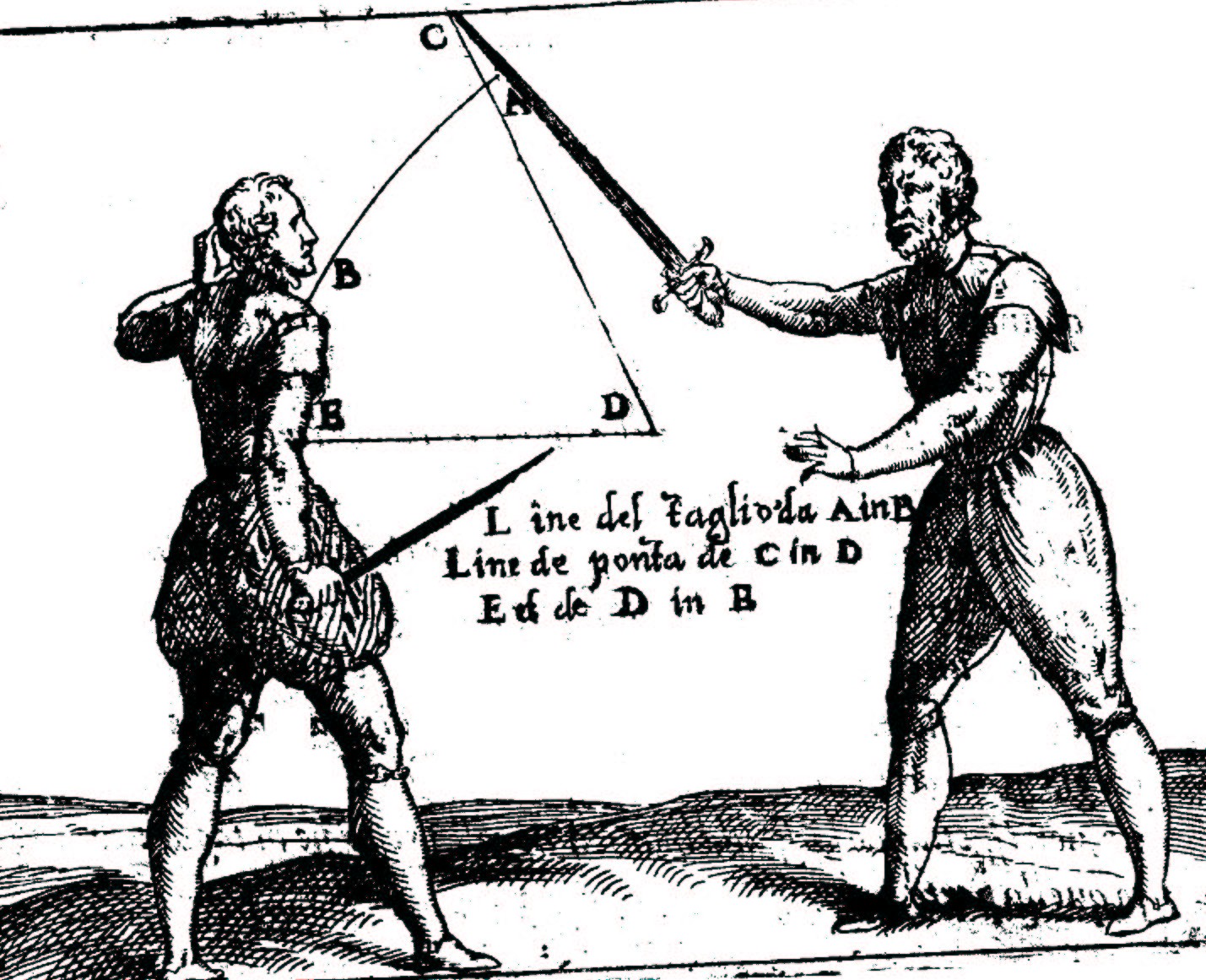
THE meanes of defending a blowe given either with the edg or point of the sword, are three. One is when the weapon is opposed to the blow, in such sort that the weapon which cometh striking either at the head or at the bodie, cannot hit home to the place whereuto it is directed, but hindered by some thing or other then set against it, be it sword, dagger, target, bil, Javelin, or anie thing els, which at that instant a man hath in his hand. For it chanceth not alwaies to weare or carrie weapons of purpose, or ordained to that entent. Neither happelie is it thought shoulier or gentlemanlike, not to know how to strike or defend, but onely with wepons framed to that end: for which cause, it may wel be said, that the soldier differeth from other men, not because he is more skilful in handling the sword or javelyn, but for that he is expert in everie occasion to know the best advantage & with judgement both to defend himself with anie thing whatsoever, and therewithal safelie to offend the enimie: In which & no other thing consisteth true skirmishing.
He that perswads hemself that he can learn this Art by the exercise of a few perticuler stroks of the point and edg is utterlie deceived: for besids, that by those perticuler triks, there is smal knowledge gotten: So the chaunces in this Arte are so daungerous & divers, that it is impossible to deliberat suddenly, except he have the universall knowledg and understandinge of all the rules and principels hereof, being grounded upon offending & defending, and not only opon the sword, the dagger, the target, the javelin & the bil. For a man at al times (when he is occasioned to strike or defend) doth not carrie these weapons about him, but is constrained to defend himselfe with a stoole or fourme from a sworde, or with a cloake from a dagger, in which case men commonly use many other things not ordained for that purpose, doing that therewith which naturall instinct teacheth them. And this instinct is no other thing then the knowledge of the rules before laide downe: which knowledge, because it is naturally grassed in the mynde, is some thing the rather holpen and quallified by Arte, and maketh a man so assured and bolde, that he dares to enter on any great daunger, and judgeth (when he seeth the qualitie of the weapon, and the syte wherein it is placed) what it maye do, or in how many waies it may either strike or defend. From which his judgement springs the knowledge of all that he hath to do, and how he hath to handle himselfe to encounter any danger.
But returning to my purpose, to wit, of the way how to defend, which is to carrie the weapon opposite, this maner is commonly used, but is not so profitable, being used as it is. And the reason is, because when men endevour themselves to encounter or oppose themselves against the weapon which commeth to strike them, (neither making bolde that their weapon can, neither knowing how it should defend) they withdraw their bodie with their foote, and commit all these faultes following.
1 First, by withdrawing of themselves, they encounter the enimies sworde towardes the poynt, in which place it beareth most force, and therefore with great difficultie they sustaine the blowe.
2 Another is, if they would strike the enimie, of force they must returne their feete and weapons thither, where they were before, and yet encrease forwards somewhat more, if they would strongly strike him: And in this they spend so much time, that the enimie may not onely easily defend, but also, verie well and safely strike. To him then what woulde use this manner of defence without danger, it is necessarie and needefull, when he encountreth the enimies sworde, that he do not withdrawe himselfe, but with his left foote increase a crooked or slope pace forwardes, the which shall encounter the sword, which before was comming striking with the edge, on that parte thereof, in which it hath least power to offend, and shal by that meanes easily withstand the blowe, But if the sworde come with a thrust, he must finde it and beat it aside: for every litle motion is sufficient to drive the poynt farre enough from danger of hurte. And there is this advantage gotten, aswel in the blow of the edge as of the point, that the bodie is voided out of the straight lyne, by meanes of the said slope pace: and it standeth so apt and so neere to offende the enimie, that one may strike in the verie instant, neither can the enimie so much withdrawe himselfe as is sufficient to avoyde the stroke: For a man hath to use the straight pace of the right foote to follow the enimie, which pace is so strong and so swift, that the enimie may not avoide it. And because this manner of defence, in mine opinion, seemeth to be most sure and short, I will use it above all other.
There is another waie, to wit, when one perceiveth the enimies sworde in the deliverie of an edge blowe, to fetch a great compasse, he may strike him before the fall of his sword with a thrust: or els when the enimie thrusteth, (but yet spendeth many times in doing therof) he may likewise strike him in as shorte time as may be. The which manner of defending is most profitable, & perchaunce the better of the two. For there is no man that will runne himselfe hedlong upon the weapon, or that, perceiving himselfe readie to be strooken, will not suddenly drawe backe and with-hold that blowe which he had alreadie prepared to discharge. And although there be some, who being strooken runne rashly on, yet generally, men wil not so do, albeit the be strooken when they are most collorick, but will, when they are strooken or wounded, give backe and be dismayed and by reason of the bloud which goeth from them, alwaies more & more be weakened.
But yet when they be so wounded, it shall be for their profit to be well advised, and not to discomfort themselves for the greatnes of the blowe, but to beare it paciently: for that which they doe in disdaine and furie shal turne them to much displeasure.
3 The third manner of defence is, when the bodie voideth out of the straight lyne towardes this or that side, but this is seeldome used alone & by it selfe, but rather accompanied with the opposing of the weapon, or with the second manner of defence aforesaid. If it be used alone, the manner is to let slipp the blow, and to strike the enimie in the same time that he is over reached in his blowe.
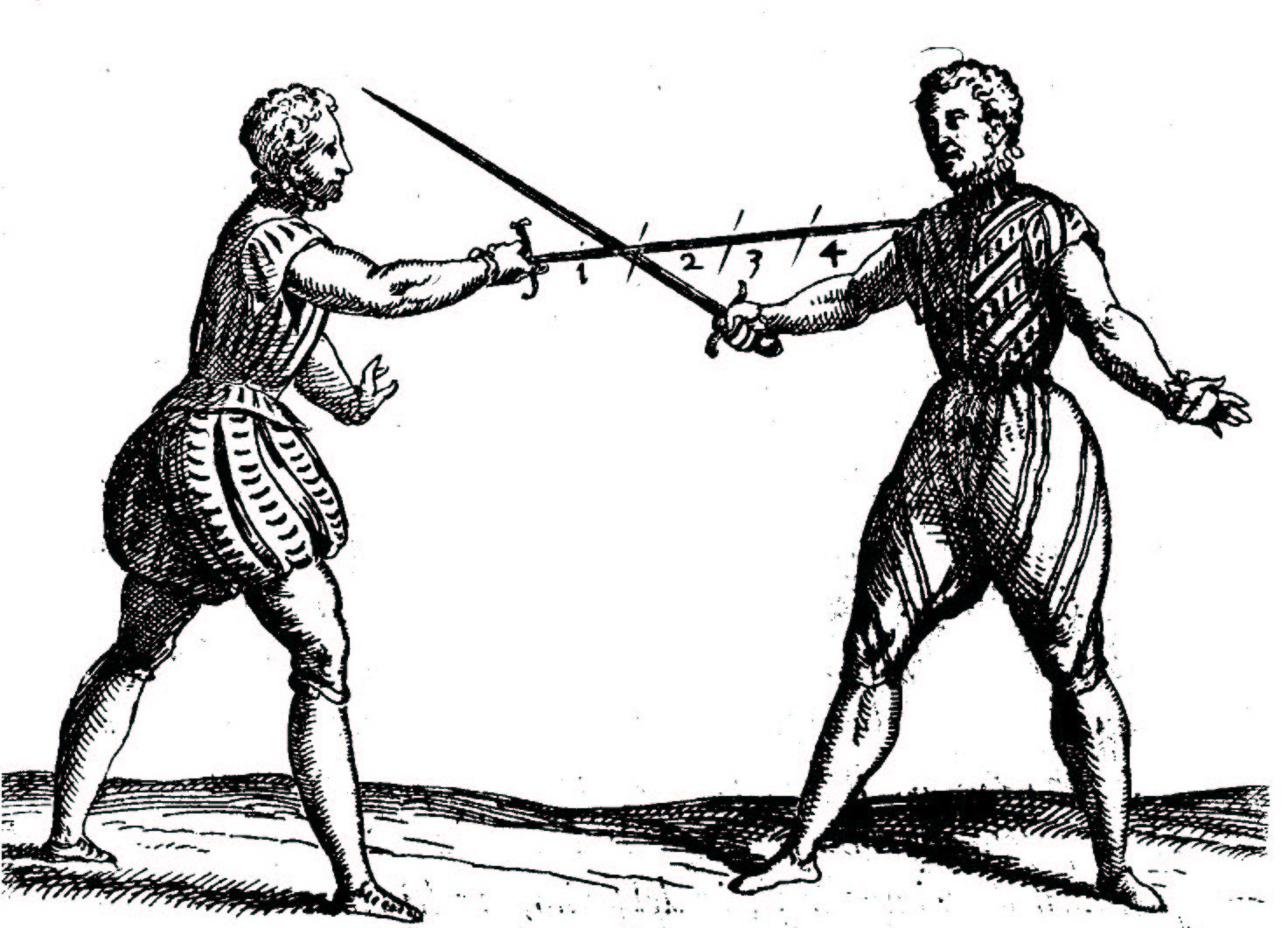
For as much as I ought in the Chapters folowing to teach more particularly all the blowes and defences in every warde, (to the ende that no man doe mervaile why I do not perfourme the same, and do thinke that the instruction is therefore imperfect) I thinke good (because my purpose is now to intreat of that only which pertaineth to true Arte, to the which the blow of the point, or thrustes, are most agreeable, being more readie and strong than ony other) to handle them principally, and yet not so, but that I will also talke of edg blows when in my treatise I come to that place where it shalbe commodious to strike therewith, placing them neere to their wardes and defenses, anthough against all edgeblose this is the best defence, to strike by the right lyne before the fall of the enimies sword, for, being delivered in the shorter time, it withstandeth their fall and lighting. The order I say, which I will observe, shalbe, to laie downe every warde, their blowes and defences, but principally of the poynt, then of the edge, if neede require.